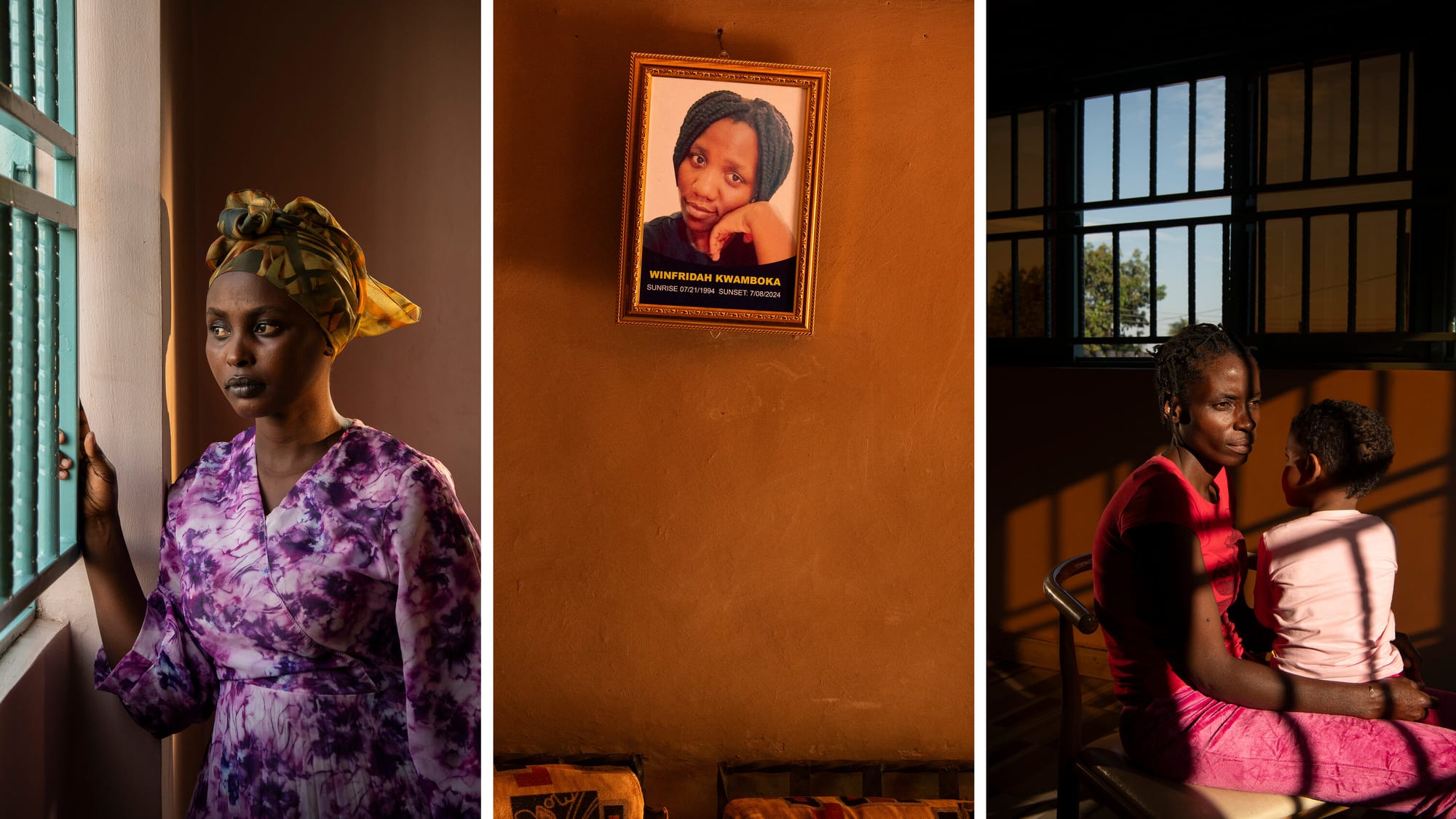Late 2017 brought a rude awakening for countless Africans across the world: Africans are still being sold as slaves. What the world thought had been confined to the pages of history books began to replay on millions of screens across the world as young Africans featured in slave cages across Libya. This revelation was a brutal shock to the reality of many African siblings, parents, friends and loved ones who had waved goodbyes across various ports, to their loved ones, with expectations of heartwarming homecomings and visions of glorious achievements abroad.
The narrative was crystal clear, with some of these Africans being sold for as little as $400: slavery does continue to exist — even in the 21st century — and Africans continue to be its premium commodity.
Better Days Or Better Slaves?
The horrors exposed in Libya were not isolated incidents but rather snapshots of a much larger, more complex web — a modern-day slave route that begins with promises of opportunity and ends in bondage, particularly in regions of the Middle East. Since then, thousands of other trafficking plots have been exposed and the African community has done its best to deploy its law enforcement agencies to combat this crime against humanity.
But the plot only thickens. In light of a dark, intricate web of mafias, trafficking cartels and lords, how much can the law really achieve?
Hence, slavery has continued to hold terror for countless Africa as an organised crime it seems they can never completely rid themselves of. Even its nomenclature has taken on a more sophisticated term and form — human trafficking. Slavery or human trafficking, the reality remains that its term and form may have changed but not the cruelty. Instead of an outright trespass on African lands and the forced capture of millions of men, women and children on native land, this new form has taken the shape of deceit, manipulation in addition to violence, as Africans are lured with promises of a better future in strange lands.
The result is daunting: millions of women forced into sexual servitude, thousands of men coerced into hard labour under inhumane conditions and innocent children illegally adopted, forced into petty crimes, sexual exploitation and labour. It is evident that the systems of exploitation have merely adapted to new disguises. Whether through forced labor, sexual exploitation, or debt bondage, the routes may differ, but the outcome remains chillingly familiar: Africans are being caught in a cycle of despair, manipulated by the very dreams they set out to chase.
Today, over 50 million people are in one form of slavery or another, with a vast majority of these existing within the Middle East region.
Modern Day Parallels In The Middle East: The Kafala System
Somehow, the Middle East has continually shown up across various sources as one of the biggest regions slavery continues to have a strong hold in today’s world. It seems the region has found itself culturally bound to its reputation as one of the slave masters of the ancient slave world. From Oman to Libya, Afghanistan, Israel and the borders of Somalia, the culture of owning slaves continues to hold a strong sway.
In a world where human rights have come to take centre stage, one would have thought that the 1948 Universal Declaration of Human Rights marked a definite end to centuries of forced and hard labour. The cold reality speaks otherwise as the Middle East has instead found ways to continue to exploit the African continent.
The situation is reminiscent of the Arab Slave Trade which thrived across the desert and the Meditarraneean sea for centuries. Today, Africans continue to live under similar conditions as they did during the slave trade. In Lebanon, for instance, reports show that degrading and dehumanising racial slurs against Black prevail. Notably, these slurs emphasise the superiority of the white skin and can be traced back to when slavery existed at the core of the Arab world.
Migrant workers in the country are made to live under a system known as the Kafala system — slave-like conditions in which they enter into work contracts with employers tagged with the benevolent name, ‘sponsors.’ These sponsors have the job of applying for visas on behalf of migrant workers, giving them jobs and living accommodations. Some go as far as paying for the commute of migrant workers from their native lands. These employers, in turn, have total control over the worker they sponsor, dictating their wages and working conditions, including what they will eat, wear and where they will sleep. They are also said to have the power to restrict migrants’ freedom of movement.
As of 2017, there were approximately 250,000 domestic workers living in Lebanon — the majority of whom are women — from Ethiopia, Bangladesh, Sri Lanka, Nepal and Madagascar.
As journalist Mona Naggar puts it, workers from poor countries are in strong demand premised on the belief that women from poor backgrounds tend to be cheaper and more obedient.
The situation gets dicier with employers also having the liberty to transfer existing contracts with domestic workers to other owners. However, for the workers, they can not transition contracts of their own accord. The result has been drastic, with human traffickers migrating numerous workers on the pretext of job opportunities and then auctioning off their contracts on digital platforms. Popular news agency, BBC, through investigations into modern day slavery, discovered numerous direct quotes from sellers on online slave markets, describing African domestic workers with phrases such as. “African worker. Clean and Smiley.”
While this is indubitably similar to the outright sale of people, under Lebanon laws, it is merely a transfer of contract, not a sale, making it perfectly legal. However, the crisis is not limited to Lebanon. Across most Middle East countries, the nightmare remains the same.
As of 2021, according to the Global Slavery Index estimates, Arab states had the highest rate of slavery per capita in the world. For every 1,000 people in the region, there were over 10 people trapped in one form of labour, trafficking, or forced marriage — about 1.7 million people being trafficked on any given day. Saudi Arabia, in particular, was identified as the fourth most prolific country where modern-slavery occurred. Despite the Index’s best efforts, the reality remains that there are more untold slavery stories out there than can be accounted for.
BBC undercover journalists further unravel this dreary tale as they ventured into Kuwait in 2019 to reveal the situation of women slaves “Drive around the streets of Kuwait and you won't see these women. They are behind closed doors, deprived of their basic rights, unable to leave and at risk of being sold to the highest bidder.”
In Kuwait, the story is not so different. Operating under the Kafala system, thousands of men, women and children are purchased via modern apps such as Facebook, Instagram, Haraj and 4Sale, forming what is now termed, an online slave market. The trade is just as lucrative as it was centuries ago. Specifically in Kuwait, domestic workers are sold for as high as $3,800. According to the journalists, these workers are not permitted to go out alone, their wages are often withheld for months, a vast majority have their passports confiscated by their employers, some are forced to work for long hours (16 hours) without breaks and they are denied access to medical care.
The inhumane working conditions migrants are often subjected to have resulted in a fast-rising death toll that often goes uninvestigated by the local police. While some have died trying to escape their employers, others die by suicide. Meanwhile, most are often dismissed without thorough investigation.
The Continuing Role Labour Migration Plays
Most who have fallen victim to today’s modern day slavery are people who left the shores of their native lands in search of better working conditions. This has culminated in the boom of a slave industry that continues to thrive on inadequate labour migration governance as stated by The Exodus Road. The United States articulates this in figures, identifying human trafficking as one of the fastest-growing crimes and a highly profitable business generating an estimated $150 billion each year.
The lucrative nature of the business has created new economic pathways for many, from victims’ own families to organised crime groups. Today, 38.7% of victims face the dangers of sexual exploitation in brothels, massage centres, hotels, bars etc. 38.8% are exploited for forced labour, working long hours in harsh conditions, just as in the slave era, in fields, plantations, and factories, cultivating crops such as rice, wheat, and coffee, often with next to no pay or none at all. Others, especially children, are coerced into illegal activities such as begging, pickpocketing, bag snatching, organ removal and drug selling. The International Labour Organisation, on the other hand, has identified six major industries victims are often forced into, namely: domestic work, seafaring, security services, construction, manufacturing, and agriculture.
While labour migration remains a vital source of livelihood for millions of African families, its lack of regulation and protection mechanisms has become a double-edged sword. The dreams of upward mobility and economic relief often turn into nightmares of bondage, abuse, and trauma. Instead of finding the better life they were promised, many migrants are ensnared in exploitative systems where their vulnerability is weaponized for profit. The absence of legal safeguards, combined with weak enforcement and corrupt networks, continues to feed a booming underground economy of modern slavery.
An Unbroken Line Of African Subjugation
What we witness today is not a distant echo of a bygone era, but the evolution of a deeply entrenched system. From the historic Arab slave trade to today’s digitized trafficking networks, Africans continue to be hunted by the same forces: racial hierarchies, economic desperation, and systemic impunity. Though the method has changed — passports instead of shackles, contracts instead of auctions — the outcome is alarmingly familiar: lives broken, dreams stolen, and humanity denied.
Slavery today wears the face of legality, cloaked in visa sponsorships and employment contracts, but the cruelty beneath is as raw and unforgiving as it was centuries ago. It is a betrayal not only of African lives but of every global promise of human dignity and freedom. If the world is to truly turn the page on slavery, it must begin by acknowledging that the story is not yet over — and commit to rewriting its ending.

Oluwatetisimi Ariyo
Oluwatetisimi Ariyo is a seasoned writer with extensive experience crafting compelling and conversion-focused content for top global brands.
Leave a Comment
Sign in or become a Africa Rebirth. Unearthing Africa’s Past. Empowering Its Future member to join the conversation.
Just enter your email below to get a log in link.

